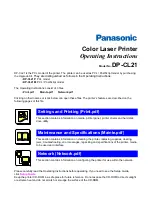
SECTION 2:
SAFETY
LASER SAFETY
Epilog Radius Model 4000 Laser Engravers not equipped with the Laser Diode Pointer option are
Class I laser products, as defined in 21 CFR 1040, the Federal Performance Standards for Light-
Emitting Products. They are fully enclosed, with interlocked doors, and no special precautions are
necessary to operate them safely. However, the operator should observe the following general
precautions:
DO NOT disassemble the engraver or remove any of its protective covers.
DO NOT attempt to defeat the door and window interlocks.
Radius Models 4000 having the Laser Diode Pointer option are Class IIIa laser products. The
output of the high-power engraving laser is fully contained, as in the model without the pointer,
but the visible output beam of the pointer itself is accessible to the operator. While it employs the
same technology as the familiar laser pen-pointers, like them it is potentially hazardous if its
beam is directed into the eye.
We have made every effort to make the Laser Diode Pointer option as safe as possible. Its beam
path is located well inside the cabinet, and under normal conditions, no hazardous levels of laser
radiation can escape.
To ensure safety, Epilog offers the following recommendations:
DO NOT disassemble the engraver or remove any of its protective covers.
DO NOT attempt to look directly into the beam of the Laser Diode Pointer.
DO NOT operate the Laser Diode Pointer without the engraver’s focus lens in place. If the
unfocused beam strikes a reflective surface, it could be directed out of the engraver’s cabinet.
The standard reference for laser safety is the American Standard for the Safe Use of Lasers,
Z136.1-1993, developed by the American National Standards Institute (ANSI). This reference is
the basis for many of the federal regulations for laser and laser system manufacturers, and for the
Occupational Safety and Health Administration (OSHA) laser safety guidelines. It contains
detailed information concerning proper installation and use of laser systems.
While the ANSI standard itself does not have the force of law, its recommendations, including
warning signage, training, and the designation of a laser safety officer, may be
compulsory
under











































